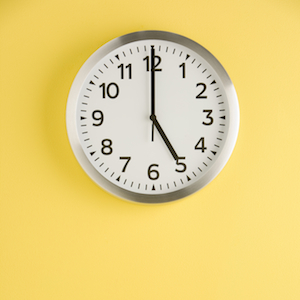 Have you ever come across a blog post that declares with absolute certainty the best time of day or the best day of the week to send emails? Of course you have! They’re everywhere. The problem is almost all of these blogs get it wrong. There simply is no “best day/time” to send emails.
Have you ever come across a blog post that declares with absolute certainty the best time of day or the best day of the week to send emails? Of course you have! They’re everywhere. The problem is almost all of these blogs get it wrong. There simply is no “best day/time” to send emails.
Here’s what you should focus on instead: the best day(s) and time(s) for your list. How do you know what those are? Testing, testing and more testing.
What these “studies” conveniently forget is that no two sets of customers are exactly alike. There’s no way that anyone can predict with any degree of certainty that your list of customers will respond exactly the same way as another list of customers. The very most you can gain from someone else’s research is a suggestion for something to test on your own list. Until you’ve tried it on your customers and seen how they react, you really don’t know a thing.
A/B split testing will let you know exactly what’s best for your unique list. The way it works is simple: Send the same email to two small groups of subscribers on different days or at different times. Track the open rates, click-through rates or other metrics of the two emails, and observe any differences. Now test again, but this time, test the winner against a different day or time. Continue to gather data points until a clear winner emerges. Only then will you be able to make a better assumption about how the list in its entirety is likely to act.
As a side note, you might want to add to your subscription center a question about day and time preferences, so that the subscribers themselves can tell you what they prefer when they sign up.
You may also find that your results aren’t crystal clear. Certain sub-segments of customers may have different likes and dislikes. Some may choose to check emails during their lunch hours, while others prefer weekends or after work hours. The point is, you’ll never know unless you test or ask.
Ultimately, when it comes to identifying a ‘best time’ to send emails, there are too many variables to identify a single correct answer that works for everyone every time. So when another blogger says he found the perfect time to send email, ask yourself: Did he look at B2C or B2B emails? What time zone were the emails sent from? What time zone were the emails going to? Where do the email recipients typically read their emails? Why do the email recipients read these emails? And what is the nature of these emails? Then compare these answers to your own subscriber list.
And if all this seem stressful, don’t worry too much. Some studies find that campaign send time might not be all that important anyhow. Tim Watson at SmartFocus explains, “More important than time of day timing, is timing with regard to the customer lifecycle.” According to Watson, perfect timing doesn’t mean 9 a.m. or 10 p.m. or Wednesdays or Mondays. Perfect timing means reaching the customer when the customer is:
- Identifying a need
- Researching options
- Or deciding which offer to choose
In other words, perfect timing is reaching the customer when the customer is ready to read what you’re sending. And the only way you’ll know that time is to know your own list.
Ready to know your list better? Click here to see how Email Intelligence can help.
 Affiliate Marketing
Affiliate Marketing Automotive
Automotive eCommerce and Retail
eCommerce and Retail FinTech
FinTech LeadGen
LeadGen Nonprofit and Political
Nonprofit and Political Payments
Payments Technology Platforms
Technology Platforms Tourism and Hospitality
Tourism and Hospitality
 Have you ever come across a blog post that declares with absolute certainty the best time of day or the best day of the week to send emails? Of course you have! They’re everywhere. The problem is almost all of these blogs get it wrong.
Have you ever come across a blog post that declares with absolute certainty the best time of day or the best day of the week to send emails? Of course you have! They’re everywhere. The problem is almost all of these blogs get it wrong. 